Nakajima Ki-44 in Profile
By Bob Pearson
The Nakajima Ki-44 Shoki (Devil-Queller) was designed as a high speed interceptor and was intended to counter the American four engined bomber. The first prototypes entered service at the outbreak of the Pacific War when nine of them were assigned to the 'Kingfisher" unit
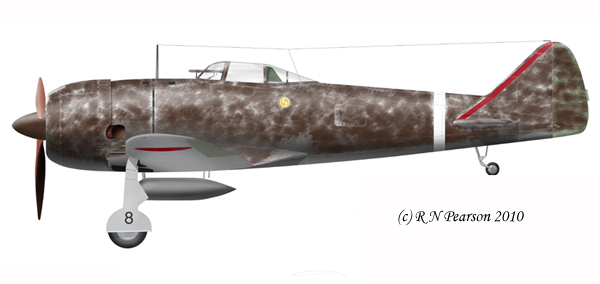
Nakajima Ki-44 4408
Captain Yasuhiko Kuroe
OC, 3rd Shotai
47 Dokuritsu Chutai
Pegu, Burma
March 1942
4408 was the 8th pre-production Ki44. The three shotais of the Kingfisher unit used one, two or three white, yellow or red stripes on the tail to indicate both the shotai (colour) and aircraft (number of stripes). They also carried a 'Ronin' badge below the cockpit. The Kingfisher Unit was soon renamed the 47th Dokuritsu Chutai (Independant Company) and continued to serve in Burma and Malaya until recalled to Japan following the Doolittle raid. Kuroe scored the first victory for the type when he downed a Buffalo.
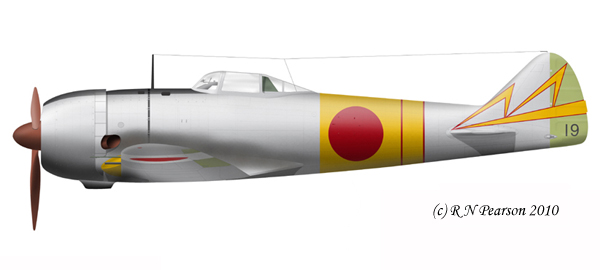
Nakajima Ki44-IIb
47th Sentai, 3rd Chutai
Narimasu, Japan
Early 1944
Upon return to Japan the 47th Dokuritsu was expanded to two and then three Chutais and renamed the 47th Sentai. Aircraft assigned to home defence wore 'bandages' behind their himomarus. Usually seen in white, they could also be found in yellow as on this aircraft.
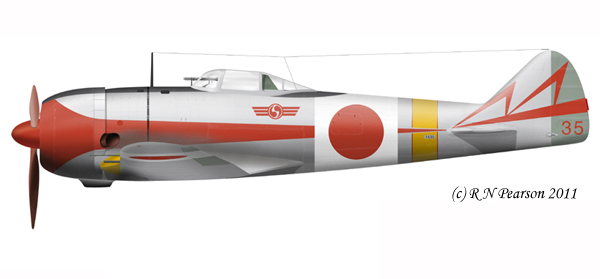
Nakajima Ki-44-IIb 1435
47th Sentai, 2nd Chutai "Sky Shadows"
Narimasu, Japan
Summer 1945
By the summer of 1945, the 2nd chutai of the 47th Sentai contained a special "Sky Shadow" squad in which their aircraft were to be used in ramming attacks on the B-29s. As such the armament and gunsghts were usually removed, additionally this particular aircraft may actually be a Ki-44-IIc which was normally armed with 40mm wing guns. The Ronin emblem of the original Kingfisher Unit has now acquired wings, and the sky shadow marking of a longitudal red stripe has been added to the fuselage
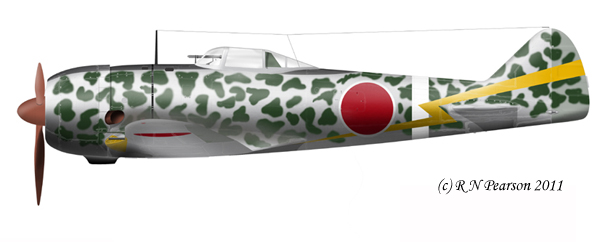
Nakajima Ki-44-IIa
50th Sentai, 2nd Chutai
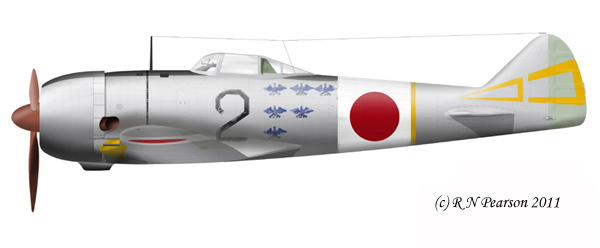
Nakajima Ki-44-IIb
2nd Lt Makoto Ogawa
70th Sentai, 3rd Chutai
Kashiwa Japan
1945
This aircraft eventually had nine victory symbols, these and the aircraft number were heavily eroded. I have seen them described as blue or black and have chosen to go with the blue.
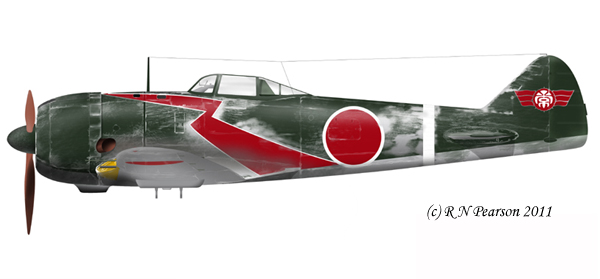
Nakajima Ki-44-IIb
Hitachi Hikoshidan Hikotai
With the increase in American raids on Japan, many of the flight schools formed combat flights made up of their instructors. The Hitachi school was no exception and here is a colourful example of one of their aircraft. The usual Hitachi flight school marking on the tail is the white emblem within the floral shape. To denote its combat status, the emblem has been given wings
References
Scott: Emblems of the Rising Sun
Bueschel: Ki-44 Shoki in JAAF Service
Famous Aircraft of the World No.16
